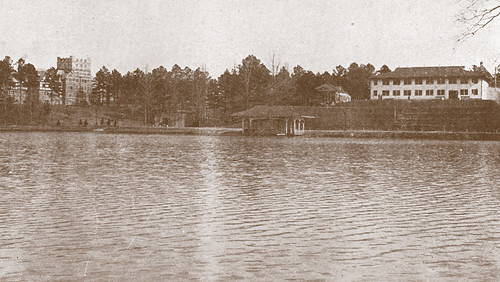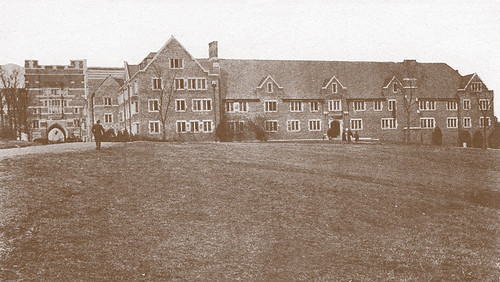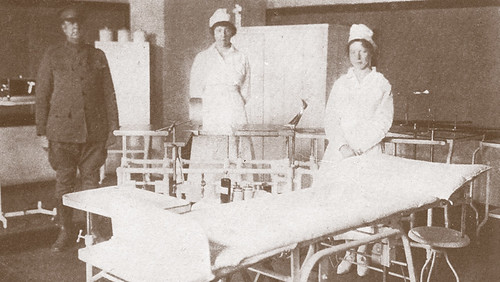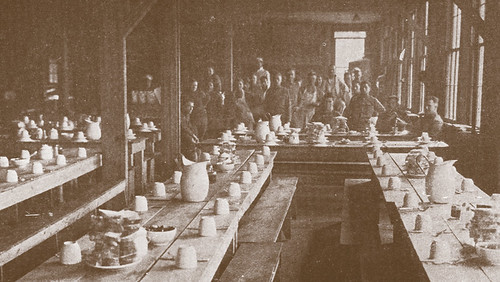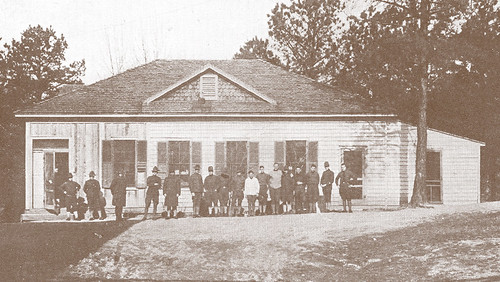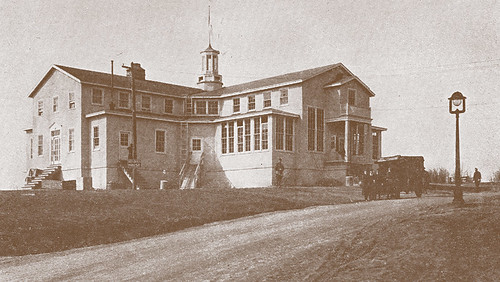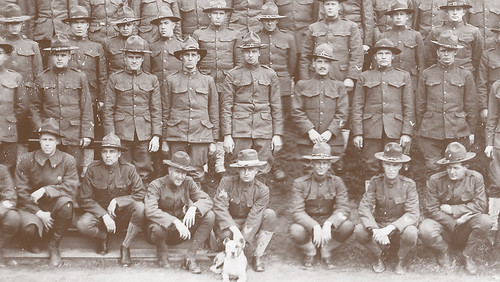Alumni, BackThen
Uncle Sam wants U(R)
Today, the distant whistles of passing trains bring the only reminder of UR’s proximity to the tracks. One hundred years ago this spring, the trains were bringing veterans of World War I to campus, which had become Debarkation Hospital No. 52.
On April 25, 1918, in a national atmosphere marked by surging American patriotism, the board of trustees voted unanimously to grant the property of Richmond and Westhampton colleges to the federal government. On June 1, the campus officially came under federal control for 13 months in exchange for $150,000 annually.
“The propaganda was intense,” said Eric Yellin, associate professor of history and American studies. “The sense that this was a chance to prove one’s patriotism, loyalty, and masculinity is upfront and pervasive.”
Though it was common for college students to drill and prepare for war, the community at Richmond seemed especially eager. Even before America formally joined the war in April 1917, President Frederic Boatwright was steadfast in his commitment to help.
“Richmond College stands ready to support you heartily in all measures you may adopt to protect American citizens and to defend the honor of our country,” he wrote to President Woodrow Wilson on March 22, 1917. “I have today inquired of the Secretary of War how our faculty and students may render the most effective service.”
Located at the end of the rail line from Norfolk, the second-busiest port city during World War I, Richmond was a prime location for transporting wounded from Europe to a stateside hospital. Richmond students, meanwhile, returned to the city campus at Grace and Lombardy streets. Westhampton students relocated to rooms rented at St. Luke’s Hospital.
“We the students of Richmond College in session this 25th day of April 1918, desire to express ourselves as deeming it not only our war-time duty, but a patriotic privilege to give our campus and buildings unreservedly to the needs of the government for her convalescent soldiers during the time of the war,” the Richmond College class presidents resolved on May 3.
Jeter Hall became home to nurses and medical personnel as North Court, Ryland Hall, Thomas Hall, and a former building called the Playhouse became military barracks and medical rooms. Part of North Court became an operating room. The Red Cross also constructed a new building for recreation in 1918 that would later be used by Westhampton women for 17 years.
By December 1918, 950 soldiers, 60 nurses, 325 enlisted men of the medical department, and 25 officers occupied campus.
“This is the beginning of rehabilitation and orthopedics, the fixing of bones and limbs,” Yellin said. “Those who are injured with injuries that are beyond the brain are met with a developing medical system that’s really psyched and ready to get everybody back to work.”
For those soldiers who stayed on campus for extended treatment before discharge to general hospitals, students created a reading room by gathering several hundred books from alumni. Campus was transformed into a fully operating military hospital.
Although the armistice ending the fighting was signed on Nov. 11, 1918, the hospital operated through the spring of 1919. In fall 1918, the grounds were once again home to students, and rightly so. As one soldier wrote, the expansive property was better equipped as a college campus than a hospital anyway.
